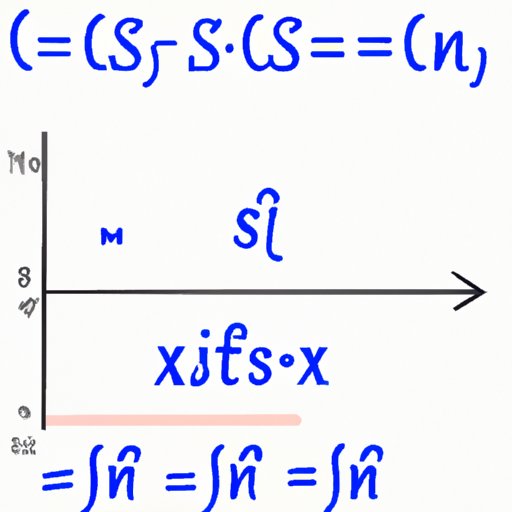
Introduction
Calculus is an essential tool in many fields, including mathematics, physics, and engineering, among others. In calculus, finding antiderivatives is necessary as it is used to determine the total areas of curves and to solve differential equations. Understanding how to determine antiderivatives is crucial to solving real-world problems that require calculations of complex processes. This article aims to provide readers with a clear understanding of the process of finding antiderivatives and multiple methods for doing so.
Understanding Calculus Basics
Calculus comprises two fundamental concepts: derivatives and antiderivatives. A derivative is the rate of change of a function at a particular point, while an antiderivative refers to the reverse concept of derivatives. Antiderivatives are the opposite of derivatives, and they help determine the initial functions that, when differentiated, gives the original function.
It is essential to note that a derivative and an antiderivative have a one-to-one correspondence relationship. This means that each derivative corresponds to one antiderivative, and vice versa. For instance, if the derivative of a function is ‘x³,’ the antiderivative of the same function would be ‘x⁴/4’ plus a potential constant.
Step-by-Step Guide for Beginners
Finding antiderivatives can be a bit tricky, and beginners should follow a step-by-step guide to determine them. A great starting point is to memorize the basic formulas of the most commonly used functions. For example, the antiderivative of ‘xⁿ’ is [(xⁿ⁺¹) / (n+ 1)] plus a potential constant, where ‘n’ represents a constant that is not equal to -1.
The next step is identifying when a function is the derivative of another function. Identify the function as f'(x) and evaluate the constant ‘k’ that can make the expression equal to the function f(x). In other words, find the antiderivative by reversing the process of differentiation.
For instance, if f'(x) = 2x, you can determine that f(x) equals x² plus a potential constant. If the function is more complex, plug it into some known formulas or try to simplify it using algebraic manipulation.
Real-Life Examples
There are several examples of real-life situations where finding antiderivatives is necessary. One such example is determining the velocity of a moving object. The antiderivative of the acceleration of the object helps to determine the velocity. Another example is determining chemical concentrations over time, where antiderivatives can be used to calculate the total amount of a particular chemical present at a certain time.
Multiple Methods for Finding Antiderivatives
There are various techniques for finding antiderivatives, including substitution, integration by parts, partial fractions, trigonometric substitution, and many more. Each method has its distinct process, but the goal is the same. To determine the antiderivative, you need to figure out which formula to apply to solve the problem.
For instance, to find the antiderivative of an expression with a variable in the denominator, partial fraction decomposition is the commonly used method.
Common Integration Techniques Focusing on Antiderivatives
Some of the most common integration techniques focusing on antiderivatives include integration by substitution, the method of integration by parts, and integration using partial fractions. Integration by substitution involves transforming the integrand and substituting the new expression into a variable.
Integration by parts involves decomposing the integrand into two functions and applying the integration rules. Partial fraction decomposition is used to separate fractions into simpler forms, which are then integrated using other methods.
Common Integration Pitfalls
One common pitfall when integrating is forgetting the integration constant. Always remember to add ‘+C’ when finding the antiderivative. Another common pitfall is forgetting to adjust the limits of integration, as the new function may have different values at the endpoints.
It is also essential to simplify expressions before attempting to use a specific integration method and to check if the answer is correct by differentiating the result and comparing it with the original integrand.
Conclusion
Finding antiderivatives is a crucial part of calculus and various other fields. Beginners must understand the basics of calculus, follow a step-by-step guide, and avoid common pitfalls. Multiple methods can be used to find antiderivatives, each with unique techniques. Through practice and patience, anyone can master how to find antiderivatives and apply them to real-world problems.




